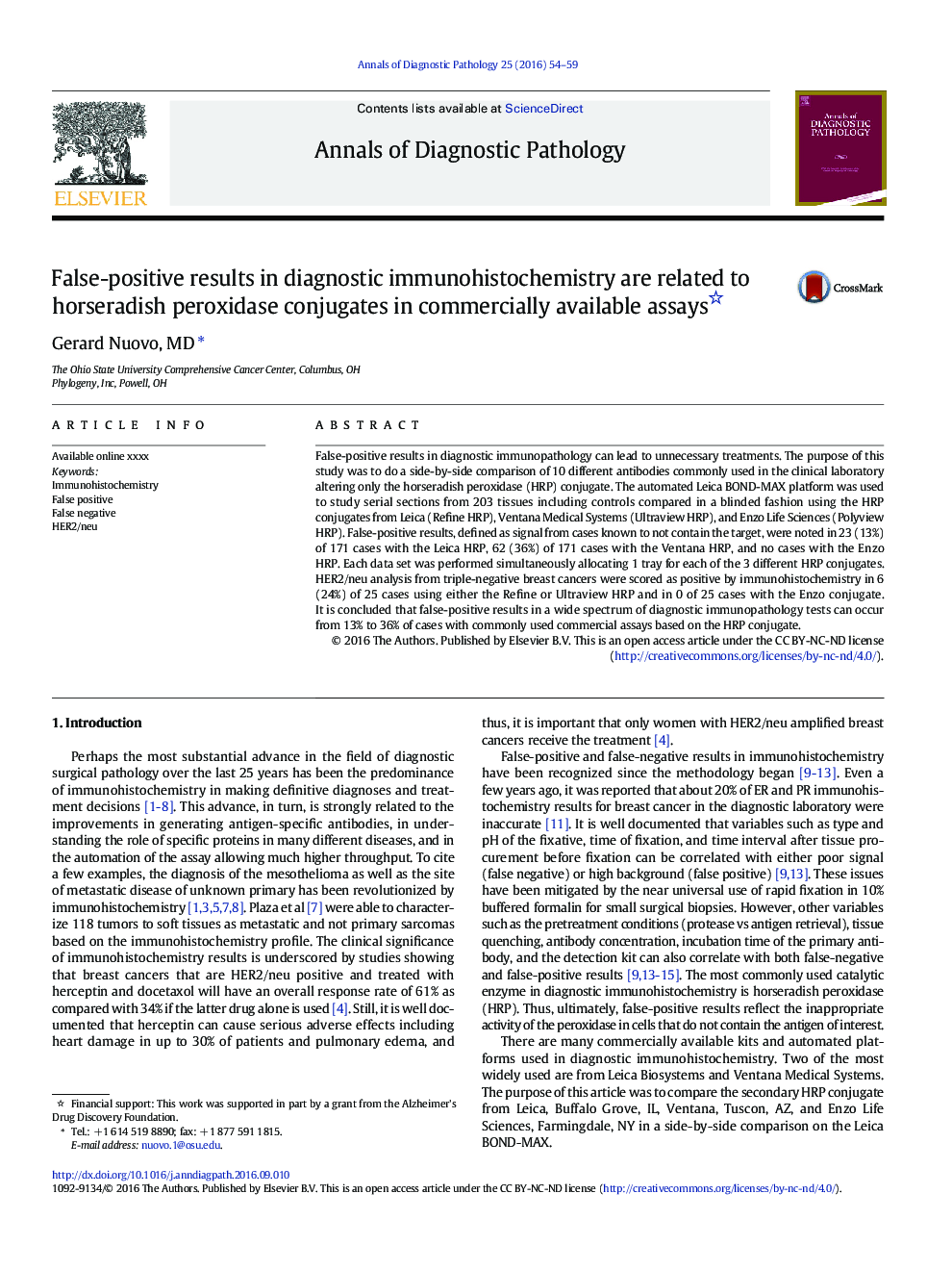| Article ID | Journal | Published Year | Pages | File Type |
|---|---|---|---|---|
| 8807245 | Annals of Diagnostic Pathology | 2016 | 6 Pages |
Abstract
False-positive results in diagnostic immunopathology can lead to unnecessary treatments. The purpose of this study was to do a side-by-side comparison of 10 different antibodies commonly used in the clinical laboratory altering only the horseradish peroxidase (HRP) conjugate. The automated Leica BOND-MAX platform was used to study serial sections from 203 tissues including controls compared in a blinded fashion using the HRP conjugates from Leica (Refine HRP), Ventana Medical Systems (Ultraview HRP), and Enzo Life Sciences (Polyview HRP). False-positive results, defined as signal from cases known to not contain the target, were noted in 23 (13%) of 171 cases with the Leica HRP, 62 (36%) of 171 cases with the Ventana HRP, and no cases with the Enzo HRP. Each data set was performed simultaneously allocating 1 tray for each of the 3 different HRP conjugates. HER2/neu analysis from triple-negative breast cancers were scored as positive by immunohistochemistry in 6 (24%) of 25 cases using either the Refine or Ultraview HRP and in 0 of 25 cases with the Enzo conjugate. It is concluded that false-positive results in a wide spectrum of diagnostic immunopathology tests can occur from 13% to 36% of cases with commonly used commercial assays based on the HRP conjugate.
Related Topics
Health Sciences
Medicine and Dentistry
Pathology and Medical Technology
Authors
Gerard MD,
